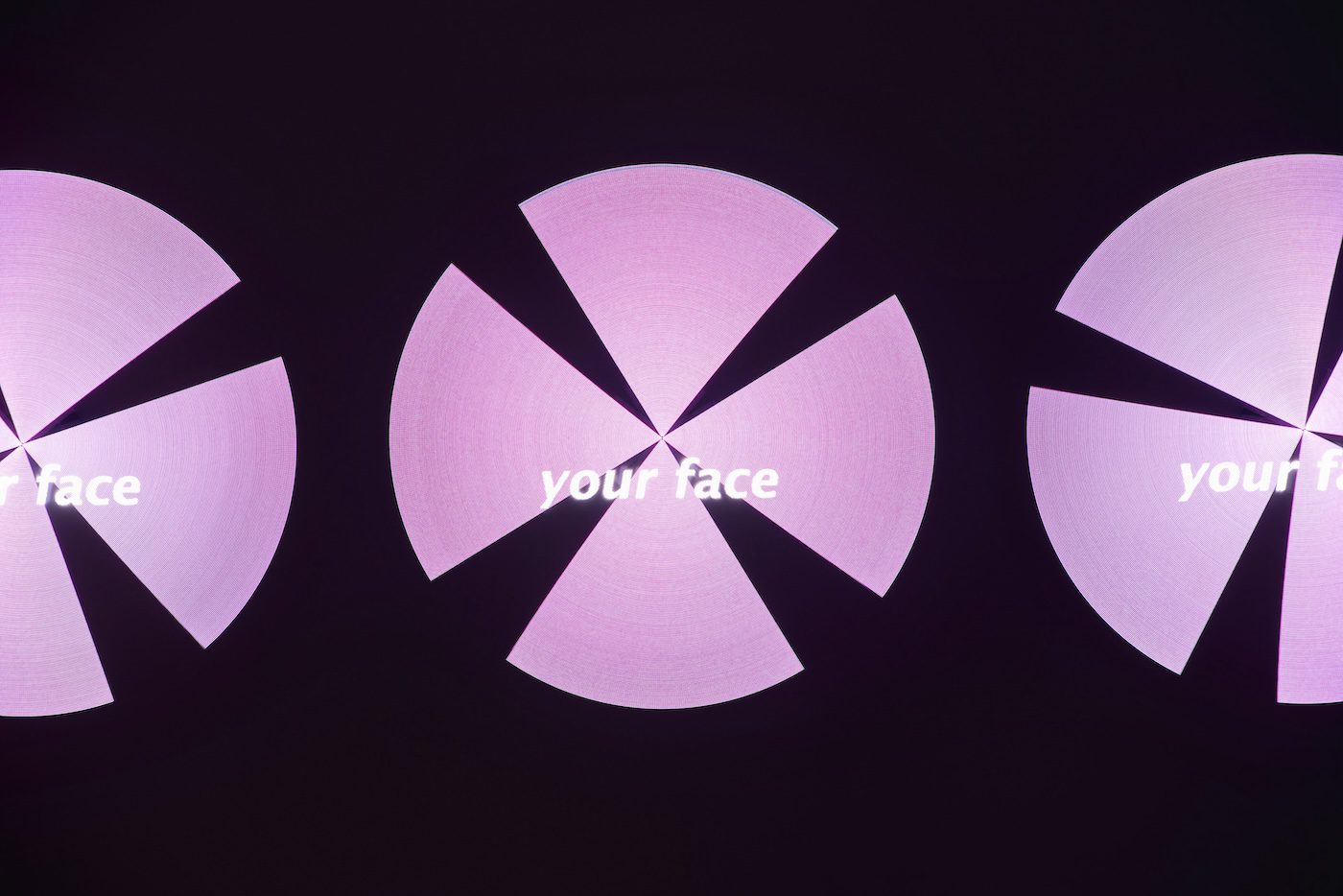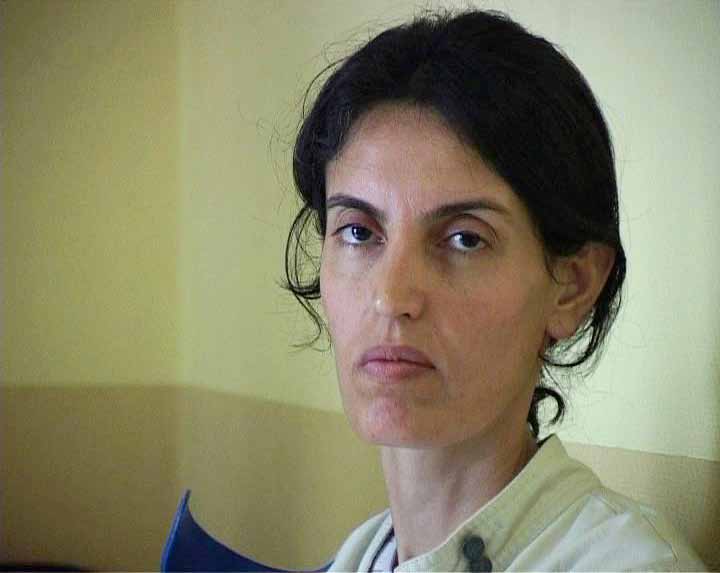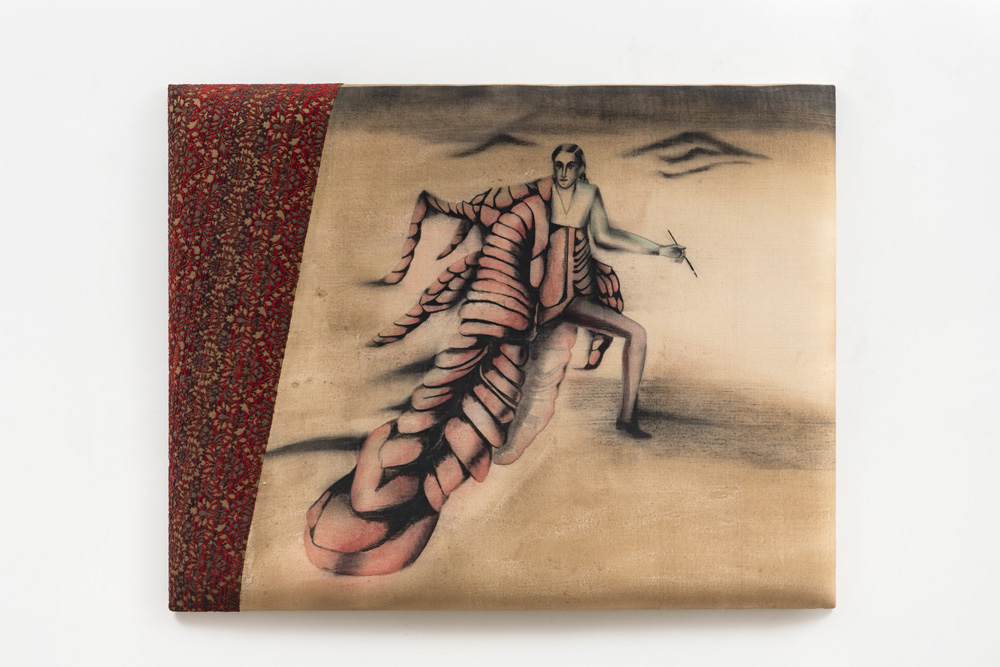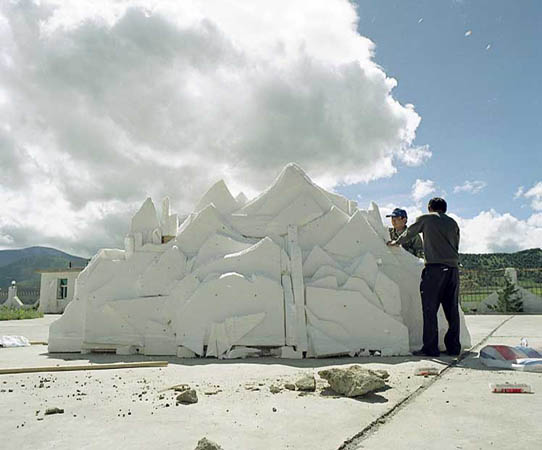
© » KADIST
Patty Chang
The video “Shangri-La” refers to the mythical city of James Hilton’s novel “Lost Horizon” written in 1933 and is exemplified in a film by Frank Capra which speaks of eternal youth in a city of happiness. In 1997, a small town in an agricultural region of central China near the Tibetan border was proclaimed as the place that inspired Shangri-la. Thereafter, a dozen other cities in the same area have claimed to be paradise on earth, prompting a marketing battle without mercy, raging on until the government’s intervention.

© » KADIST
Wura-Natasha Ogunji
Wura-Natasha Ogunji’s recent drawing of cutout figures on architectural tracing paper takes a statement by Leoluca Orlando, the Mayor of Palermo, as a point of departure for the work. Stating, “migration problems can and should find their solution within the affirmation of ‘freedom of movement’ as the new inalienable right of humans. No human has chosen or chooses the place where they were born.

© » KADIST
Dale Harding
Dale Harding’s installation Body of Objects consists of eleven sculptural works that the artist based on imagery found at sandstone sites across Carnarvon Gorge in Central Queensland. Mouth-blown with ochre on sandstone, these extraordinary stencilled images depict weaponry, domestic tools, and ceremonial objects that are specific to the region and that relate to Harding’s own ancestry. In response to these enduring indexes of Indigenous material culture, Harding produced a suite of cast objects using the stencilled imagery as a guide, along with objects that relate to his family history: boomerangs, spears, clubs, and whips are all part of the display.

© » KADIST
Chitra Ganesh
The title of Rainbow Body by Chitra Ganesh refers to an elevated state of, or metaphor for, the consciousness transformation known as a rainbow body. The Buddhist master Padmasambhava achieved this state from his union with Mandarava, a female spirit (dakini) and princess in Tantric Buddhism. Through study and physical connection, each played a key role in the other’s enlightenment.

© » KADIST
Yao Qingmei
Satirizing an airport security checkpoint, The Ecdysiast – Molt (Body Inspection) by Yao Qingmei offers a comedic and critical inquiry into the logics underpinning collective control and surveillance culture. The three channels of the video respectively feature a dancer (left), a chorus (middle), and a security inspector (right). The dancer and security inspector enact a mechanical burlesque performance that parodies the body inspection procedures implemented by airport security.

© » KADIST
Yu Ji
Flesh in Stone – Ghost No. 1 is a stunning series of cement made body parts in various scales and movements, along with components such as iron and plaster molds to emphasize their tension. The “incompleteness” of Flesh in Stone weakens the figurative image itself, thus shifting the viewer’s focus onto the relationship between the rough material and the ideal rounded body shapes.

© » KADIST
Shen Xin
Composed of five episodes, Brine Lake (A New Body) by Shen Xin is set in a fictional factory where iodine is produced as a byproduct of natural gas sourced from deep sea brine lakes. Korean, Japanese, and Russian are spoken in multiple episodes. The protagonists have multiple encounters and conversations with two unseen employees of the factory whose visions are overtaken by the camera.

© » KADIST
Kori Newkirk
LAB (2013) conjures the body as the trace of a sooty hand appears, spectrally, on a crumpled paper towel. His photograph of this throwaway object calls back the body, and the handprint is in fact his own right hand; thus the piece can function as a self-portrait of the artist, in an ironic twist on the art historical genre.

© » KADIST
Marion Scemama, David Wojnarowicz
Political artist, painter, writer, performer, photographer, David Wojnarowicz, who died of AIDS in 1992 in New York City, was one of the leading figures of the New York Downtown artistic scene of the 80s. His use of image, language and collage generated a new method of idea communication. The series of five videos Collaborative Film Collection made in collaboration with Marion Scemama in 1989 is emblematic of his artistic practice, it unfolds through performance, films, photographs, texts and paintings.

© » KADIST
Kubra Khademi
Drawing & Print (Drawing & Print)
Kubra Khademi’s work celebrates the female body and in her detailed drawings and paintings she portrays female bodies floating on white paper. Specifically she portrays the two bodies she had access to when she learned how to draw: herself and on occasion her mother. She represents women as warriors, goddesses and shameless playful heroines in search of pleasure and discovery.

© » KADIST
Kubra Khademi
Drawing & Print (Drawing & Print)
Kubra Khademi’s work celebrates the female body and in her detailed drawings and paintings she portrays female bodies floating on white paper. Specifically she portrays the two bodies she had access to when she learned how to draw: herself and on occasion her mother. She represents women as warriors, goddesses and shameless playful heroines in search of pleasure and discovery.

© » KADIST
Kubra Khademi
Drawing & Print (Drawing & Print)
Kubra Khademi’s work celebrates the female body and in her detailed drawings and paintings she portrays female bodies floating on white paper. Specifically she portrays the two bodies she had access to when she learned how to draw: herself and on occasion her mother. She represents women as warriors, goddesses and shameless playful heroines in search of pleasure and discovery.

© » KADIST
Anna Boghiguian
In the painting called “The Consciousness of Memory, Time, and Guilt” as in many of her recent works, the body is fragmented. The brain, the ear, the eyes, these body parts that put us in relation with the other and link the visible to the invisible, remain isolated. Whereas the skulls are joined by lines evoking rivers.

© » KADIST
Angela Su
Drawing & Print (Drawing & Print)
From afar, Chimeric Antibodies by Angela Su may look like scientific drawings or botanical illustrations. Yet, upon closer look, sexual organs and imagined human and plant elements start becoming recognizable, and realistic. Each intricate, large-scale drawing indeed mixes human body parts, machines and other organic constructions as they become intertwined and inseparable.
![Resurgimiento [Resurgence]](https://kadist.org/wp-content/uploads/2023/01/IMG_Resurgence-Acrylic-on-canvas-135-x-67cm-scaled.jpg)
© » KADIST
Wynnie Mynerva Mendoza Ortiz
Wynnie Mynerva places their body at the center of their practice from an intimate perspective and healing dimension. Their paintings are thresholds where body parts proliferate beyond names and labels, dissolving and intermingling gender marks, organs, and prostheses. Resurgimiento [Resurgence] was produced in the aftermath of their fifth solo show Closing to Open (Galería Ginsberg, Lima, 2021), in which Mynerva addressed their experience of going through a vaginal surgical procedure to help them feel more aligned with their gender identity.

© » KADIST
Sarah Navqi
A “mata ni pachedi” is a piece of painted textile that depicts narrative images of goddesses. Traditionally, the images would be painted onto a piece of cloth found in the temple. Also known as the “kalamkari” (a hand-painted or block-printed cotton textile), “mata ni pachedi” literally translates to “behind the mother goddess”.
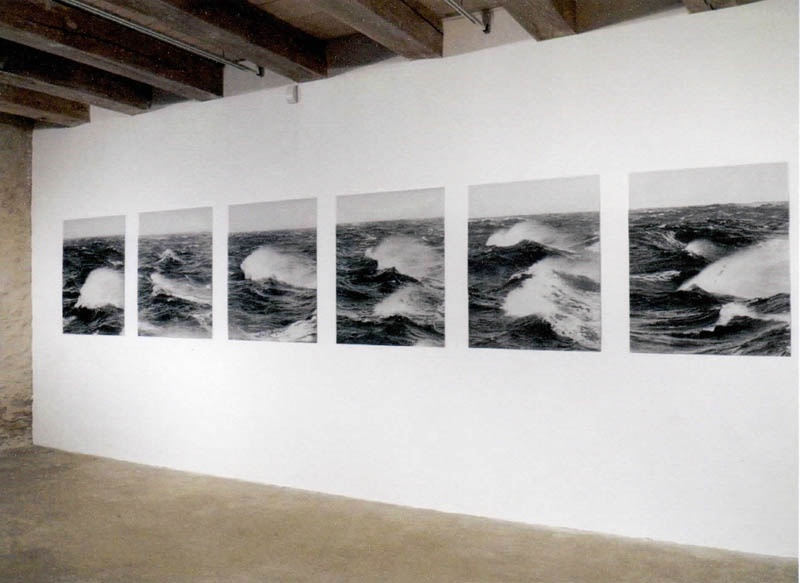
© » KADIST
Jochen Lempert
A Trip to the North Sea is composed of 6 parts. The images show a rough sea, with huge waves. The waves foam, swell and collapse.

© » KADIST
Nguyen Thai Tuan
In the “Black Paintings” series, although the human body is only suggested, it plays an important role. Some body parts are absent, mostly the faces which are usually an affirmation of the individual. The characters recall ghosts testifying as to the traumas of war.

© » KADIST
Wong Hoy Cheong
Re: Looking marks a new phase in Wong’s work which connects his region’s history with other parts of the world. The video—located in an imagined contemporary Malaysian middle-class living room, a space of a fictive former imperial power—explores the precarious link between fact and fiction, fakery and authenticity by overlaying three believable, authoritative forms: a documentary, a website, and a realistic reconstruction of a contemporary home. It is rife with occidental colonial documents and exotic cultural artifacts—the trophy-evidence of Empire-making.

© » KADIST
James "Yaya" Hough
Drawing & Print (Drawing & Print)
This untitled ink and pencil drawing by James “Yaya” Hough is made on what the artist calls “institutional paper”, or the state-issued forms that monitor the daily activities of prisoners, of which, each detainee is generally required to fill out in triplicate. The form used for this drawing is a request for medical attention. This work illustrates an assembly-line of severed bodies being pumped full of feet and other body parts.
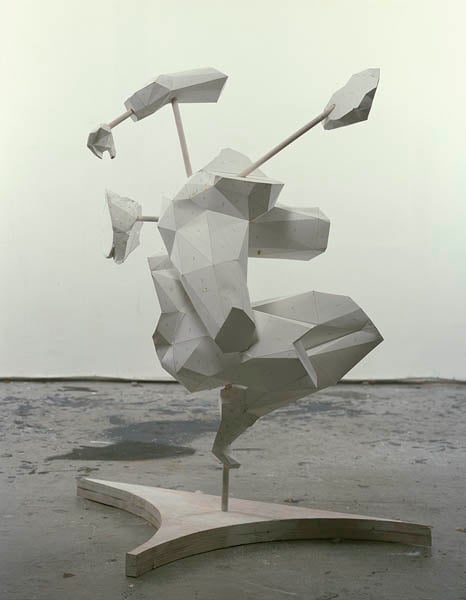
© » KADIST
Toby Ziegler
Wagon Wheel is a work with a fundamental dynamism that derives both from the rotating movement of the elements suspended on poles and the kicking of the legs of the figure. It is based on a pornographic image by Giulio Romano (ca.1499-1546). Romano had completed Raphael’s frescos in the Vatican after the latter’s death but was not paid for the work.

© » KADIST
Ashmina Ranjit
While most of Ashmina Ranjit’s work has been large-scale installations, often immersive and site-specific, the series Hair Warp – Travel Through Strand of Universe is a brilliant concentration of both her beliefs and aesthetic. In this series, human hair is treated as a sacred element that connects womanhood and as Ranjit states, “all phenomena beyond the sky”. In the painting, the sinuous hair strands morph constantly into different braids, swirls, and landscapes, emitting a mysterious force of life.

© » KADIST
Douglas Gordon
Douglas Gordon’s single-channel video The Left Hand Can’t See That The Right Hand is Blind, captures an unfolding scene between two hands in leather gloves—at first seemingly comfortable to be entwined, and later, engaged in a struggle. As suggested by the work’s title, each of the hands assumes a character with a distinct personality, as if we were witnessing a lovers’ quarrel and embrace, or the embodiment of opposing forces of an internal struggle. Gordon has previously created performance-based works depicting his own body or parts of it—arms, hands, fingers, eyes—usually enacting simple, repetitive movements.

© » KADIST
Chitra Ganesh
Rabbithole by Chitra Ganesh is a digital animation that refigures a fundamental plot device in myths and fables. Referencing iconic folklore such as Alice in Wonderland, the Odyssey, and the Mahabharata, Ganesh’s video illustrates the story of a hero’s journey and transformation that is not driven by the glory of violent conquest or saving a damsel in distress. Ganesh’s short video features a colorful style of illustration specific to the artist’s comic works.

© » KADIST
Edgardo Aragón
In the agricultural areas of Mexico, Indigenous people use the mylar magnetic tape unspooled from VHS cassettes as an alternative to the scarecrow—the reflective tape flutters in the wind and does an excellent job scaring birds away from crops. This kind of creative reuse of materials (overproduced and devalued) that flow through the global trade of consumer goods, is especially rich in Mexico and other parts of Latin America. In 2020, during a period of isolation due to Covid-19, Edgardo Aragón unspooled a VHS tape and installed it in his father’s crop of corn for six months.
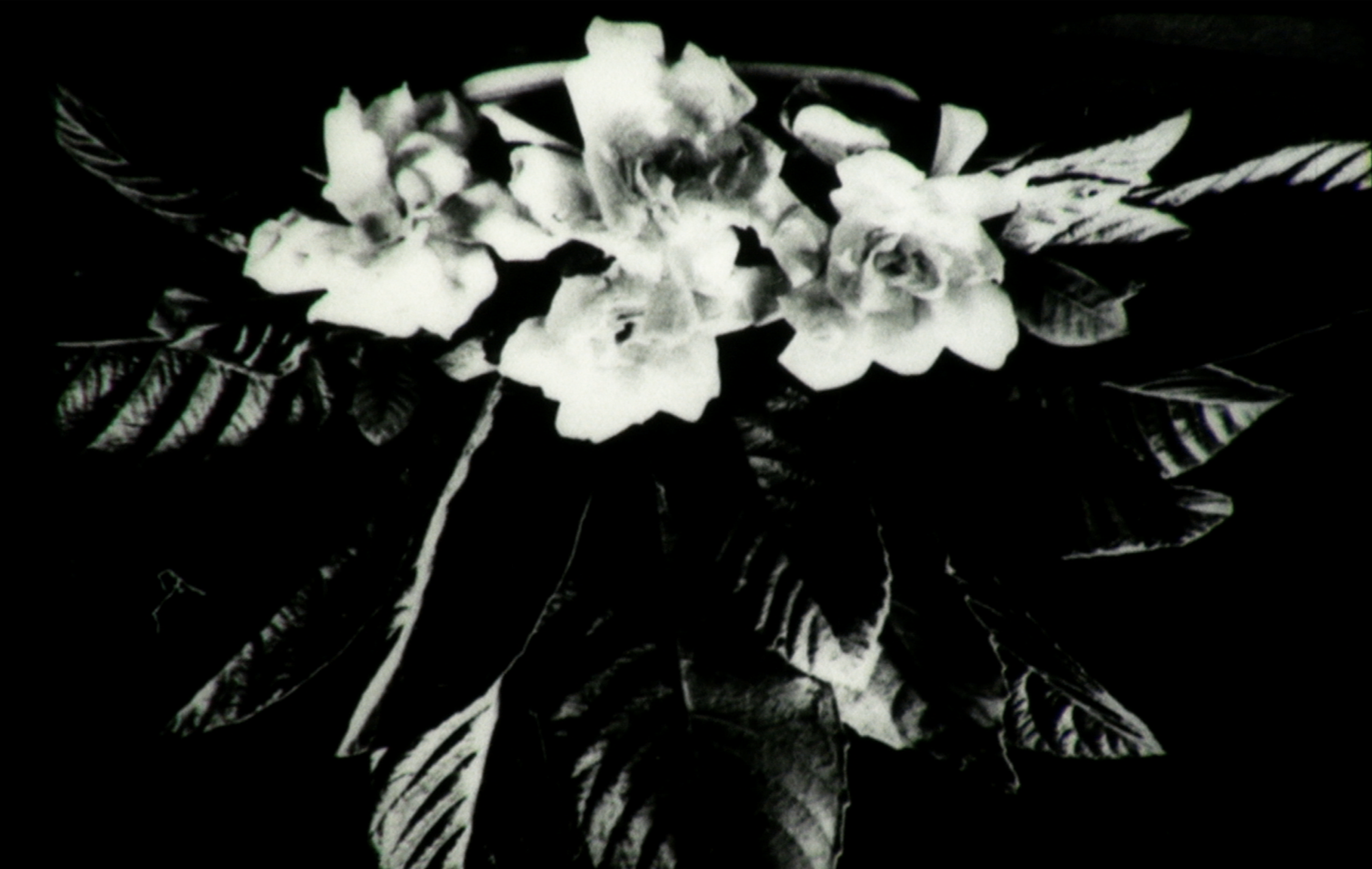
© » KADIST
Mary Helena Clark
The Dragon is the Frame by Mary Helena Clark is an elegy that is somewhat paradoxically organized as a film noir or murder mystery, one that pays direct homage to Hitchcock’s Vertigo . But the parts don’t fit, and it is only in the eventual recognition of this faux raccord that Clark’s higher purpose becomes apparent. As we hear Bernard Herrmann’s score, we see the Golden Gate Bridge, Mission Dolores, and other Vertigo locations in the present day.

© » KADIST
Phi Phi Oanh
Palimpsest is a series of what artist Phi Phi Oanh calls “pictorial installations”. Lacquerscope is the name she has given to the lacquer projection machines that she created from lenses and old parts of small format film projectors. The name harkens back to the early age of mechanical reproduction that also coincides with the “invention” of Vietnamese lacquer painting in the last century.
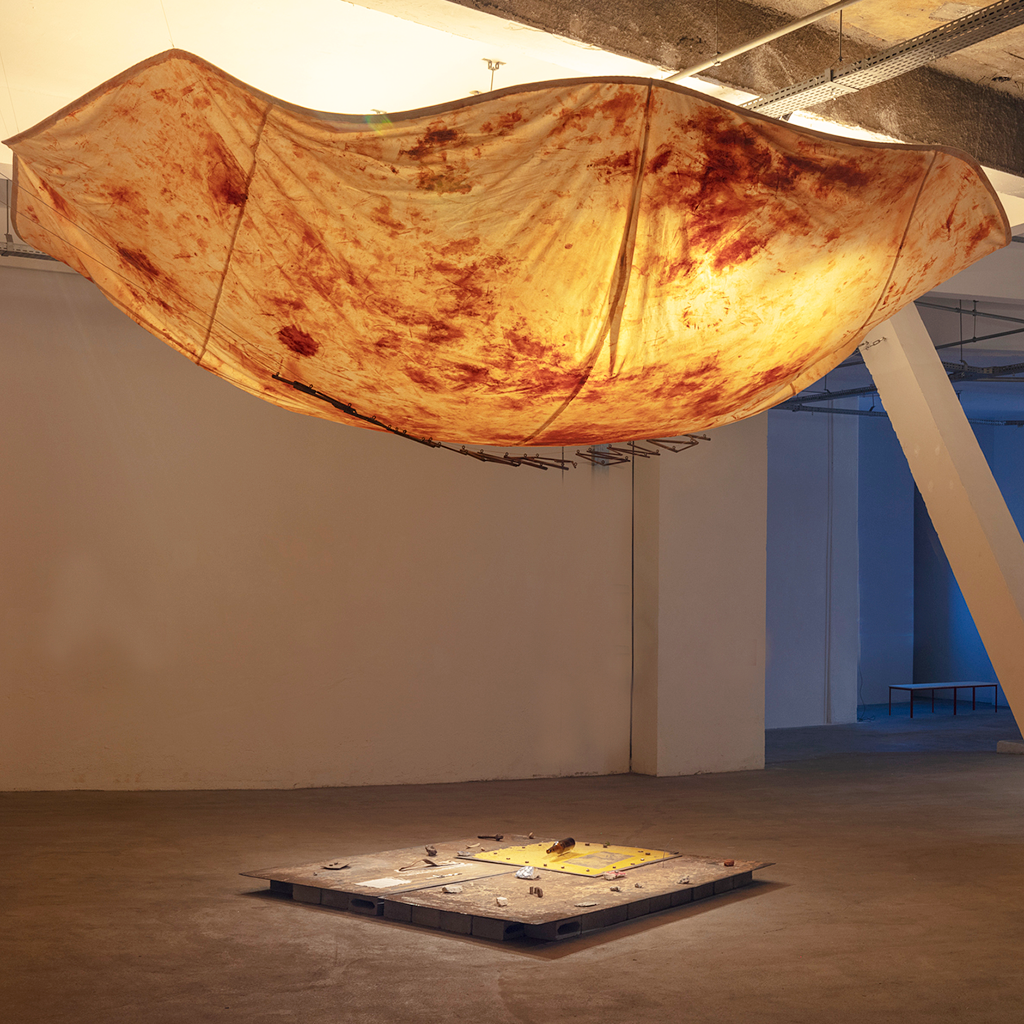
© » KADIST
arquivo mangue
o que diriam as pedras a marte? [What would the stones say to Mars?] is a sculptural work consisting of two parts by arquivo mangue.

© » KADIST
Ho Rui An
Embracing the conflicting negative and positive affect of the horror genre, Ho Rui An’s film Student Bodies is a self-described work of “pedagogical horror,” that organizes social, political, and economic events in Asia around the motif of the student body. Bound together by a suspenseful, eerie soundtrack, the film temporally cycles through its separate, though thematically interrelated, phenomena and events centering Asian students. Using the student body motif as a human signifier of varied connotations, the film follows phenomenon ranging from the Ch?sh?

© » KADIST
Felipe Romero Beltrán
Dialect by Felipe Romero Beltrán is a photographic series that follows a group of immigrants who have recently crossed the strait (the maritime border between Morocco and Spain) to avoid border controls. The young immigrants settle in Seville while their legal situation is either resolved or refused. Reflecting on his own status as a migrant, Beltra?n’s series of photographs documenting Morrocan immigrants is a tribute to their trajectories; a trace of their existences.
Kubra Khademi
Afghani artist Kubra Khademi uses her practice to explore her experiences as both a refugee and as a woman...
Amapola Prada
As the daughter of an actor, Amapola Prada recalls frequently attending the theater as a child and noticing that she never saw herself (her body or reality) represented...
Moe Satt
Moe Satt is a Burmese visual and performance artist who uses his own body as a symbolic field for exploring self, identity, embodiment, and political resistance...
Laure Prouvost
Laure Prouvost is a multi-disciplinary artist best known for her films and immersive large-scale multi-media installations, in which she plays with words and their meanings in non-linear ways...
Karla Kaplun
Karla Kaplun’s practice centers on micro-utopias, the construction and functioning of collective memory, as well as mechanisms of political and economic power and control...
Mateo Lopez
- location: Bogota, Colombia
- year born: 1978
- gender: male
- nationality: Colombian
- home town: Bogota, Colombia
Clarisse Hahn
Through her films, photographs and video installations, Clarisse Hahn continues a documentary research on communities, behavioral codes and the social role of the body...
Mona Marzouk
Mona Marzouk is an artist whose practice is deeply rooted in a keen sense for architecture...
Chitra Ganesh
Spanning printmaking, sculpture, and video, Chitra Ganesh’s work draws from broad-ranging material and historic reference points, including surrealism, expressionism, Hindu, Greek and Buddhist iconographies, South Asian pictorial traditions, 19th-century European portraiture and fairy tales, comic books, song lyrics, science fiction, Bollywood posters, news and media images...
Wura-Natasha Ogunji
Wura-Natasha Ogunji is a visual artist and performer...
Shen Xin
Shen Xin’s practice examines how emotion, judgment, and ethics are produced and articulated through individual and collective subjects...
Ho Rui An
The artist, writer, and researcher Ho Rui An probes histories of globalization and governance, performing a detournement of dominant semiotic systems across text, film, installation, and lecture...
Dale Harding
A descendant of the Bidjara, Ghungalu, and Garingbal peoples, Dale Harding’s work references and expands upon the philosophical and spiritual touchstones of his cultural inheritance...
James "Yaya" Hough
Working in ballpoint pen, pencil, and watercolor, often on the backs of bureaucratic prison forms, James “Yaya” Hough’s work conveys the burdens of incarcerated life, revealing not only the brutal reach of the carceral system, but laying bare its affects...
Li Ming
- location: Beijing, China
- year born: 1979
- gender: male
- nationality: Chinese
- home town: Sichuan Province, China
Mary Helena Clark
Mary Helena Clark is an artist working in film, video, and installation...
Lin Yilin
- location: Beijing & New York
- year born: 1964
- gender: male
- nationality: Chinese
- home town: Guangzhou, China
David G. Tretiakoff
The work of French filmmaker David Gheron Tretiakoff often revolves around the socio-political movements of the Middle East...
Anne Samat
An exuberant and precise sculptor, Anne Samat blends the aesthetic of international queer cultures – which she proudly represents as a transgender activist – with various textile and bricolage influences from South East Asia and beyond...
Jumana Manna
Jumana Manna is a Berlin-based artist whose work revolves around the body, national identity, and historical narratives...
Wynnie Mynerva Mendoza Ortiz
Wynnie Mynerva is a non-binary artist based in Lima whose pictorial and performative practice is developed in close collaboration with the transgender and queer communities where they belong...
Victor & Sergiy Kochetov
Viktor Kochetov became engaged in photography in 1968 and was also a professional photographer in film and photo laboratories...
Shahryar Nashat
The work of Shahryar Nashat (b...
Wong Hoy Cheong
- location: Kuala Lumpur, Malaysia
- year born: 1960
- gender: male
- nationality: Malaysian
- home town: George Town, Malaysia
Yao Qingmei
Informed by her long-term interest in the complex tensions between music, dance, text, and video, Yao Qingmei’s practice collapses the boundary between performance and its site...
Patty Chang
- location: New York, New York
- year born: 1972
- gender: female
- nationality: American
- home town: San Francisco, California
Fabien Giraud & Raphael Siboni
The collaborative work of Fabien Giraud and Raphael Siboni is part of a reflection on the history of cinema, science, and technology...
John Baldessari
- location: Los Angeles, California
- year born: 1931
- gender: male
- nationality: American
- home town: National City, California
Benvenuto Chavajay Gonzalez
Benvenuto Chavajay’s body of work includes sculpture, interventions into objects, installation, performance, and painting...
Shaun Leonardo
For the past decade Shaun Leonardo’s practice has been fully engaged in the politics of race, identity and pervasive male violence in sports...

© » ASX
about 21 months ago (02/02/2024)
RaMell Ross – Spell, Time, Practice, American, Body – AMERICAN SUBURB X Skip to content An image I find myself returning to over and over again is a photograph by RaMell Ross titled Dream Catcher (2014)...

© » COLOSSAL
about 22 months ago (12/18/2023)
Since the 1960s, British artist Antony Gormley has used the language of sculpture to examine relationships between human beings, nature, and the cosmos...

© » ARTNEWS
about 22 months ago (12/15/2023)
Nancy Brooks Brody, fierce pussy Cofounder, Dies at 61 – ARTnews.com Skip to main content By Maximilíano Durón Plus Icon Maximilíano Durón Senior Editor, ARTnews View All December 15, 2023 5:26pm Nancy Brooks Brody in 2009...

© » HYPERALLERGIC
about 22 months ago (12/14/2023)
Talia Chetrit Treads the Line Between Style and Substance Skip to content Talia Chetrit, "Roman on Denis" (2022) (all images courtesy the artist, kaufmann repetto, Sies and Hoke, and Hannah Hoffman) HARTFORD, Conn...

© » HYPERALLERGIC
about 22 months ago (12/14/2023)
Nani Chacon Finds the Essence of Home Skip to content Nani Chacon, "I Miss You…" (2023), graphite and acrylic on polytab, 102 x 140 inches (all photos by ofstudio, courtesy Timothy Hawkinson Gallery) LOS ANGELES — “[Nani Chacon] addresses how a secure home is essential.” This the phrase, from the press release for Chacon’s exhibition + Home+ at Timothy Hawkinson Gallery, forced me to pause...

© » WHITEHOT
about 22 months ago (12/12/2023)
Dog Days: an interview with painter Maud Madsen advertise donate post your art opening recent articles cities contact about article index podcast main December 2023 "The Best Art In The World" "The Best Art In The World" December 2023 Dog Days: an interview with painter Maud Madsen Baby Doll, 2023...

© » WALLPAPER*
about 22 months ago (12/12/2023)
American Express explores the meaning of play | Wallpaper The Miami installation debuting Play by American Express Platinum during Miami Art Week 2023 (Image credit: Courtesy American Express) By Tilly Macalister-Smith published 12 December 2023 In celebration of Design Miami and Art Basel Miami , American Express has commissioned four young artists and designers - Eny Lee Parker, Surin Kim, Serban Ionescu, and Kumkum Fernando - to reinterpret childhood toys into iconic limited edition collectibles...
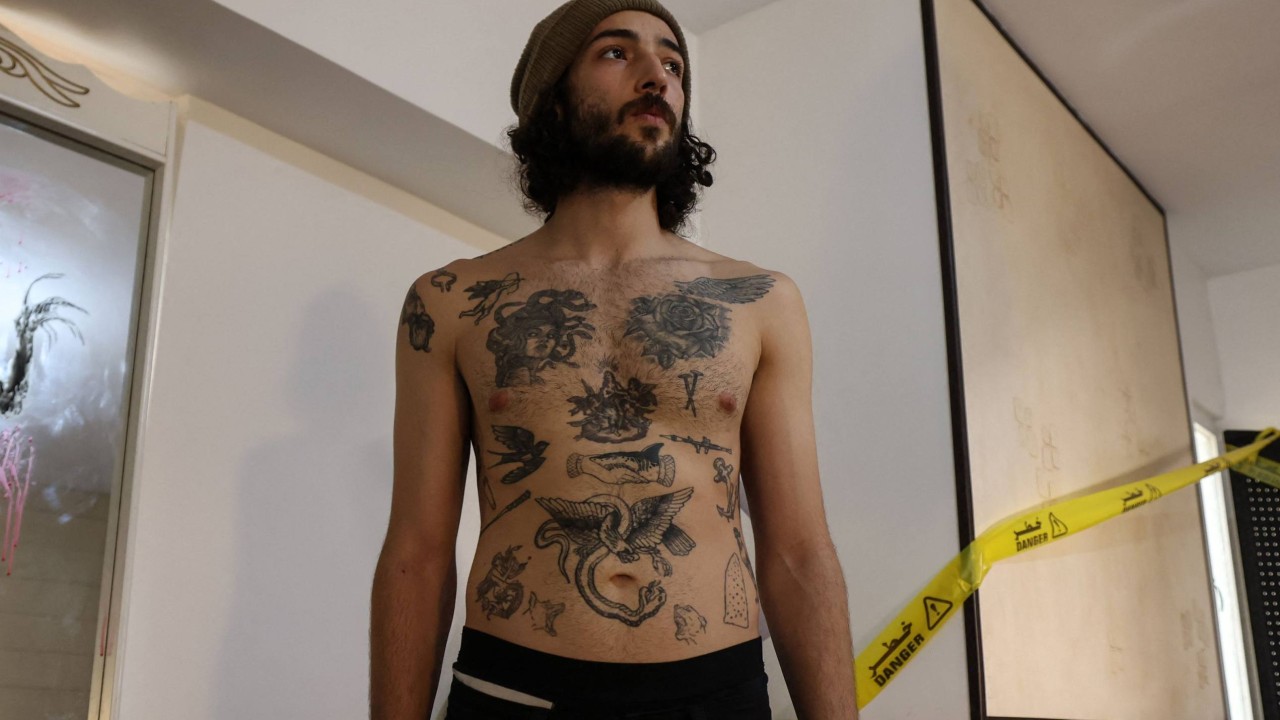
© » SOUTH CHINA MORNING POST
about 23 months ago (12/05/2023)
‘Tattoos are not a crime’ – how Iranian tattoo artists are leaving an indelible mark on a society that is slowly coming to accept body ink | South China Morning Post Advertisement Advertisement Art + FOLLOW Get more with my NEWS A personalised news feed of stories that matter to you Learn more An Iranian man shows his tattoos in Iran’s capital, Tehran...

© » HYPERALLERGIC
about 23 months ago (12/05/2023)
Women’s Oppression Is the Earth’s Oppression Skip to content Laura Aguilar, "Nature Self-Portrait #5" (1996) (© Laura Aguilar Trust of 2016) LONDON — The tradition of landscape photography is entwined with a patriarchal settler-colonial perspective...

© » LENS CULTURE
about 23 months ago (12/04/2023)
For Parts Not Working - Photographs by Lisa Murray | Interview by Sophie Wright | LensCulture Award winner For Parts Not Working Following a traumatic brain injury, Lisa Murray delved deep into the inner workings of her mind, camera in hand, in an attempt to piece back together her story...

© » BOMB
about 25 months ago (09/18/2023)
BOMB Magazine | Le’Andra LeSeur Interviewed Necessary (Required) Cookies that the site cannot function properly without...

© » LENS CULTURE
about 28 months ago (07/04/2023)
Reunion — Hand-Embroidered School Class Portraits - Photographs and text by Diane Meyer | LensCulture Feature Reunion — Hand-Embroidered School Class Portraits By obscuring the faces with embroidery — which would typically be the most important parts of these elementary school class portraits — otherwise overlooked details are brought into focus, such as body language and other embodiments of social convention...
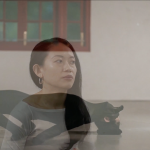
© » ARTS EQUATOR
about 49 months ago (09/20/2021)
The working processes of artists: Sonia Kwek | ArtsEquator Thinking and Talking about Arts and Culture in Southeast Asia ArtsEquator Viewpoints September 20, 2021 “Probably your body is the one space you can be the most autonomous still”, says artist and performer Sonia Kwek...
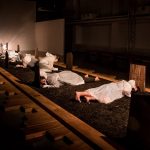
© » ARTS EQUATOR
about 52 months ago (06/28/2021)
The Body Witness: Gardens Speak, en route, As Far As Isolation Goes at SIFA 2021 | ArtsEquator Thinking and Talking about Arts and Culture in Southeast Asia ArtsEquator Viewpoints Arts House Limited June 28, 2021 By Vithya Subramaniam (1,600 words, 6-minute read) Though cancelled last year amid the developing pandemic, Singapore International Festival of Arts has done well to lean into the possibilities of small-group, distanced programmes for this year’s line-up...
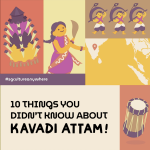
© » ARTS EQUATOR
about 61 months ago (10/24/2020)
10 Things You Didn’t Know About Kavadi Attam | ArtsEquator Thinking and Talking about Arts and Culture in Southeast Asia ArtsEquator Radar Joy Ho / Jawn October 24, 2020 10 Things is a series of three short animated videos, each focusing on a lesser known traditional artform – Dikir Barat, Kavadi Attam and Nanyin...

© » ARTS EQUATOR
about 68 months ago (03/12/2020)
Podcast 78: Asia TOPA (Part 1) | ArtsEquator Thinking and Talking about Arts and Culture in Southeast Asia Articles March 12, 2020 The following review is made possible through a Critical Residency programme supported by In this latest podcast episode, Nabilah Said and Carolyn Oei discuss various productions that were recently presented at Melbourne’s Asia TOPA: Black Ties | HuRu-hARa | Chinese Square Dancers | The Seen and Unseen | Torch the Place | Metal This is the first of a two-part episode...

© » HIGH FRUCTOSE
about 70 months ago (01/02/2020)
In the hands of KT Beans, a seashell takes on unsettling qualities...
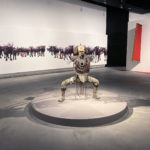
© » ARTS EQUATOR
about 71 months ago (12/22/2019)
Everything In Its Right Place: The Body Politic and the Body | ArtsEquator Thinking and Talking about Arts and Culture in Southeast Asia Articles Nabilah Said December 22, 2019 By Nabilah Said (1,400 words, 7-minute read) “You’re a guest, you’re a guest, you’re a guest.” This anodyne version of the Beauty and The Beast song played in my head as I walked through the exhibition The Body Politic and the Body , currently on at ILHAM Gallery in Kuala Lumpur...

© » ARTS EQUATOR
about 73 months ago (10/09/2019)
Translating Homeland: Tanah•Air 水•土: A Play In Two Parts | ArtsEquator Thinking and Talking about Arts and Culture in Southeast Asia Articles Zinkie Aw for Drama Box October 9, 2019 By Nabilah Said (1,900 words, 7-minute read) In less than a week, Drama Box will premiere Tanah•Air 水•土: A Play In Two Parts , a production revolving around the theme of histories, those that are remembered, and those who are sidelined...

© » ARTS EQUATOR
about 74 months ago (09/27/2019)
The Traditional Body, The Contemporary Mind and The (Dancing) Mother | ArtsEquator Thinking and Talking about Arts and Culture in Southeast Asia Articles Sivarajah Natarajan September 27, 2019 By January Low (1,693 words, 7-minute read) A little over a year ago, I was invited to be a part of MI(X)G , Festival Tokyo’s 2018 opening production, and the cherry on the sundae was to work together with legendary Thai contemporary dance artist Pichet Klunchun for five weeks spread out over four months...
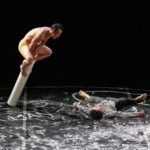
© » ARTS EQUATOR
about 77 months ago (07/01/2019)
Binary at M1 CONTACT 2019: Breaking all the rules with “Stigma” and “Dan-su” | ArtsEquator Thinking and Talking about Arts and Culture in Southeast Asia Articles Courtesy of M1 CONTACT July 1, 2019 By Chloe Chotrani (1,130 words, 6 -minute read) The 10th anniversary edition of Binary – International Artist Showcase presented two returning artists to the festival...

© » ARTS EQUATOR
about 79 months ago (04/29/2019)
The Body Remembers: Kitt Johnson on "Stigma" at M1 CONTACT Contemporary Dance Festival 2019 | ArtsEquator Thinking and Talking about Arts and Culture in Southeast Asia Articles "Stigma", photo by James Quah (left), Kitt Johnson, photo by Per Morten Abrahamsen (right) April 29, 2019 By Germaine Cheng (605 words, three-minute read) 2019 marks the 10th edition of the M1 CONTACT Contemporary Dance Festival , a humble endeavour by Kuik Swee Boon, artistic director of T...
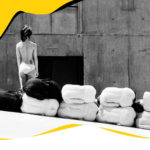
© » ARTS EQUATOR
about 79 months ago (04/28/2019)
What If Your Body Turns into a Sculpture? : Interview with Sasha Waltz on "Körper" at SIFA 2019 | ArtsEquator Thinking and Talking about Arts and Culture in Southeast Asia Articles April 29, 2019 By Winnie Chen Dixon (600 words, four-minute read) Have you ever imagined dancers’ bodies turning into sculptures, as if time stood still? This is the impression of Körper (Body) , the signature dance performance of this year’s edition of the Singapore International Festival of Arts....

© » ARTS EQUATOR
about 84 months ago (11/17/2018)
“Private Parts”: Sometimes You’ve Got to Fix What God Gave You Thinking and Talking about Arts and Culture in Southeast Asia Articles Photo courtesy of Michael Chiang Playthings November 17, 2018 By Eugene Tan (1720 words, six-minute read) This review contains some spoilers of a few of the sight gags and plot points in Private Parts ...
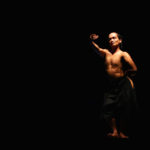
© » ARTS EQUATOR
about 85 months ago (10/09/2018)
"Hijrah": In Between Body and Gender 'Migration' | ArtsEquator Thinking and Talking about Arts and Culture in Southeast Asia Articles Sapto Agus October 9, 2018 By Michael HB Raditya (1018 words, five-minute read) Read this review in Bahasa Indonesia ...
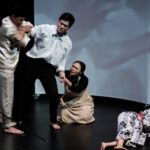
© » ARTS EQUATOR
about 86 months ago (09/27/2018)
“Tiger of Malaya”: The Body Remembers What the Archive Cannot Thinking and Talking about Arts and Culture in Southeast Asia Articles Images courtesy of Monospectrum Photography September 27, 2018 By Corrie Tan (2,080 words, 10-minute read ) Spoiler alert: this essay discusses certain plot points about Tiger of Malaya in detail...

© » ARTS EQUATOR
about 86 months ago (09/14/2018)
Sitting in the ‘gap’: Faye Lim explores body autonomy for children (via Talking Circles) | ArtsEquator Thinking and Talking about Arts and Culture in Southeast Asia Articles September 15, 2018 Faye Lim dances, facilitates, performs, improvises, makes, and mothers...
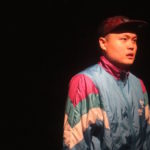
© » ARTS EQUATOR
about 88 months ago (07/25/2018)
"dead was the body": Theatre Meets Breaking Meets Therapy | ArtsEquator Thinking and Talking about Arts and Culture in Southeast Asia Articles Adeeb Fazah July 25, 2018 By Akanksha Raja (1500 words, seven-minute read) dead was the body till i taught it how to move ( dwtb ) is Bhumi Collective’s first production of the year, and just like their two principal works of 2017 – Every Brilliant Thing with Andrew Marko and The Last of Their Generation with Mohamed Shaifulbahri – it is a one-man show...
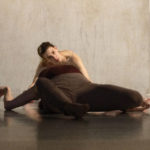
© » ARTS EQUATOR
about 89 months ago (07/05/2018)
Astrid Boons: Belgian Choreographer brings "Vestige" to Singapore | ArtsEquator Thinking and Talking about Arts and Culture in Southeast Asia Articles July 5, 2018 By Bernice Lee (974 words, 5 minute read) I caught Astrid Boons between rehearsals in Korzo for Vestige ...
-
1970-1979
Victor & Sergiy Kochetov
1978Having a press card allowed Viktor Kochetov to photograph freely in public places, access to which was strictly regulated for amateurs...
Antonio Ole
1978Antonio Ole’s Rhythm of N’gola Rhythms (1978), is a film about the struggle for Angolan political independence...
-
1980-1989
Marion Scemama, David Wojnarowicz
1989Political artist, painter, writer, performer, photographer, David Wojnarowicz, who died of AIDS in 1992 in New York City, was one of the leading figures of the New York Downtown artistic scene of the 80s...
-
-
2000-2009
Wong Hoy Cheong
2004Re: Looking marks a new phase in Wong’s work which connects his region’s history with other parts of the world...
Douglas Gordon
2004Douglas Gordon’s single-channel video The Left Hand Can’t See That The Right Hand is Blind, captures an unfolding scene between two hands in leather gloves—at first seemingly comfortable to be entwined, and later, engaged in a struggle...
Alexandre da Cunha
2005Glaze (Savana) (2005) is an assemblage of found materials: a car wheel, a tire, and a wooden plinth of the type traditionally used to display sculpture...
Toby Ziegler
2007Wagon Wheel is a work with a fundamental dynamism that derives both from the rotating movement of the elements suspended on poles and the kicking of the legs of the figure...
Nguyen Thai Tuan
2008In the “Black Paintings” series, although the human body is only suggested, it plays an important role...
-
2010-2019
Chitra Ganesh
2010Rabbithole by Chitra Ganesh is a digital animation that refigures a fundamental plot device in myths and fables...
Nao Bustamante
2010Silver & Gold combines video, performance, and original costumes into a self-proclaimed “filmformance” that evokes the legendary filmmaker Jack Smith and his tribute to 1940s Dominican movie starlet Maria Montez in a magical and joyfully twisted exploration of race, glamour, sexuality, and the silver screen...
Angela Su
Drawing & Print
2011(Drawing & Print) From afar, Chimeric Antibodies by Angela Su may look like scientific drawings or botanical illustrations...
Phi Phi Oanh
2011Palimpsest is a series of what artist Phi Phi Oanh calls “pictorial installations”...
Clarisse Hahn
2011Prisons is part of a series of videos, entitled Our Body is a Weapon , representing individuals who affirm the body as a place of political and social resistance...
Mateo Lopez
2012With Roca Carbón (Charcoal Rock, 2012) and Roca Grafito ( Graphite Rock , 2012), López plays with our relationship to inert and unremarkable objects such as rocks...
Mateo Lopez
2012With Roca Carbon ( Charcoal Rock , 2012) and Roca Grafito ( Graphite Rock , 2012), López plays with our relationship to inert and unremarkable objects such as rocks...
Diane Simpson
2012Simpson’s sculptural practice connects architecture, clothing, furniture and the body to explore the functional and sociological roles and the influence of the design and architecture of various cultures and periods in history...
Kori Newkirk
2013LAB (2013) conjures the body as the trace of a sooty hand appears, spectrally, on a crumpled paper towel...
Amapola Prada
2013n the opening scene of the video Power (La Fuerza) we see a mature woman asleep in a dark room...
Anna-Bella Papp
2013Untitled exemplifies the format that Anna Bella-Papp most commonly works in, using her hands to create delicate tablet-like reliefs within a rectangular form made out of clay...
Amapola Prada
2013In Amapola Prada’s work Movement, we see three spotlit, female bodies lying inert in a darkened room, alongside three dressed, standing figures holding long, wooden spoons...
Amapola Prada
2013In the video Unit/y we see Amapola Prada in the center of the screen wearing an oversized, worn out sweatshirt, socks and flip-flops—standing motionless on a dimly lit street in her native Lima, Peru...
Benvenuto Chavajay Gonzalez
2013Jardín (2013) refers to environmental destruction, specifically the preponderance of disposable plastics, as well as Medellín’s long history of dangerous conflict; it was once considered the most violent city in the world because of the drug trafficking there...
Anna Boghiguian
2014In the painting called “The Consciousness of Memory, Time, and Guilt” as in many of her recent works, the body is fragmented...
Mary Helena Clark
2014The Dragon is the Frame by Mary Helena Clark is an elegy that is somewhat paradoxically organized as a film noir or murder mystery, one that pays direct homage to Hitchcock’s Vertigo ...
Mona Marzouk
2014Trayvon is a series of acrylic paintings by Mona Marzouk that engages the courtroom as its points of departure...
Mona Marzouk
2014Trayvon is a series of acrylic paintings by Mona Marzouk that engages the courtroom as its points of departure...
Xiaoyun Chen
2014The central point of Vanishing Point is the most direct physiological reaction of the body to the environment...
Jumana Manna
2015Blue Elbow (Coude bleu) is made from plaster, burlap, lacquer, pigments and plastics...
Fabien Giraud & Raphael Siboni
2015-In which predicting its past it lives working and dies fighting- Fifth episode of The Unmanned , “La Mémoire de Masse” unfolds during the second Canuts revolts in Lyon in 1834...
Sahej Rahal
Drawing & Print
2015(Drawing & Print) Within the narrative of Sahej Rahal’s The rocks we will find, beings perform absurd acts in derelict corners of the city, emerging into the everyday as if from the cracks of our civilization, transforming them into liminal sites of ritual, and challenging ways in which we experience time and space...
Naufus Ramírez-Figueroa
2015Naufus Ramírez-Figueroa’s performance Illusion of Matter establishes a dream state through a composition of motifs that were drawn from the artist’s childhood memories...
Shahryar Nashat
2015Employing both the High Modernist technique of abstraction and monochronism, as in the work of Lucio Fontana and Yves Klein, and bodily states of fetishization, Yea High (sweetpreparator) reworks the art historical canon of movement and the body to consider flesh as a physical construction of man-made matter...
James "Yaya" Hough
Drawing & Print
2016(Drawing & Print) This untitled ink and pencil drawing by James “Yaya” Hough is made on what the artist calls “institutional paper”, or the state-issued forms that monitor the daily activities of prisoners, of which, each detainee is generally required to fill out in triplicate...
David G. Tretiakoff
Drawing & Print
2016(Drawing & Print) Immolation I is taken from the four-part Immolation series which shows four Arab revolutionaries who publicly sacrificed themselves through self-immolation and in so doing heralded the beginning of the Arab Spring...
Edgardo Aragón
Drawing & Print
2016(Drawing & Print) Mesoamericana (Economic activities) is part of a larger project titled Mesoamerica: The Hurricane Effect, which includes a video as well as series of hand drawn maps -based on historical cartography- that examine the effects of foreign power in Mexico today...
Cally Spooner
2016The installation Self Tracking (the five stages of grief) was realized from a performance that is to be re-activated...
Yao Qingmei
2017Satirizing an airport security checkpoint, The Ecdysiast – Molt (Body Inspection) by Yao Qingmei offers a comedic and critical inquiry into the logics underpinning collective control and surveillance culture...
Alex Da Corte
2017Slow Graffiti was produced for Da Corte’s exhibition at the Vienna Secession in 2017...
Dale Harding
2018Dale Harding’s installation Body of Objects consists of eleven sculptural works that the artist based on imagery found at sandstone sites across Carnarvon Gorge in Central Queensland...
Chitra Ganesh
2018The title of Rainbow Body by Chitra Ganesh refers to an elevated state of, or metaphor for, the consciousness transformation known as a rainbow body...
Judith Hopf
2018Hopf’s works reference the effects that developments in economics and technology have had on our bodily and mental composition...
Laure Prouvost
2018Monteverdi Ici by Laure Prouvost is a non-narrative video work that depicts the back of the artist’s naked body standing, with her back towards the camera in a field...
Laure Prouvost
2018Monteverdi Ici – Deeply, Feeling Filling the World by Laure Prouvost is a tapestry that references a video by the artist entitled Monteverdi Ici (2018)...
Andrew Ekins
2018Butter Mountain is part of an ongoing series of works that combines a sense of painterly mass and substance with sculptural language to examine the synergy between a topographical landscape and a landscape of the human condition...
Anne Samat
2018Anne Samat’s Puteri 3 references Ulek Mayang, a classical Malay dance, performed in a ritualistic pre-Islamic context...
Wura-Natasha Ogunji
2019Wura-Natasha Ogunji’s recent drawing of cutout figures on architectural tracing paper takes a statement by Leoluca Orlando, the Mayor of Palermo, as a point of departure for the work...
Sarah Navqi
2019A “mata ni pachedi” is a piece of painted textile that depicts narrative images of goddesses...
Karla Kaplun
Drawing & Print
2019(Drawing & Print) Studying the body in movement, this series of drawings depart from Karla Kaplun’s work A ztec BLAST® Workout (AWB) ...
Karla Kaplun
Drawing & Print
2019(Drawing & Print) Studying the body in movement, this series of drawings depart from Karla Kaplun’s work A ztec BLAST® Workout (AWB) ...
Rosalind Nashashibi
2019Rosalind Nashashibi’s paintings incorporate motifs drawn from her day-to-day environment, often reworked with multiple variations...
-
2020-2029
Kubra Khademi
Drawing & Print
2020(Drawing & Print) Kubra Khademi’s work celebrates the female body and in her detailed drawings and paintings she portrays female bodies floating on white paper...
Kubra Khademi
Drawing & Print
2020(Drawing & Print) Kubra Khademi’s work celebrates the female body and in her detailed drawings and paintings she portrays female bodies floating on white paper...
Kubra Khademi
Drawing & Print
2020(Drawing & Print) Kubra Khademi’s work celebrates the female body and in her detailed drawings and paintings she portrays female bodies floating on white paper...
Ashmina Ranjit
2020While most of Ashmina Ranjit’s work has been large-scale installations, often immersive and site-specific, the series Hair Warp – Travel Through Strand of Universe is a brilliant concentration of both her beliefs and aesthetic...
Edgardo Aragón
2020In the agricultural areas of Mexico, Indigenous people use the mylar magnetic tape unspooled from VHS cassettes as an alternative to the scarecrow—the reflective tape flutters in the wind and does an excellent job scaring birds away from crops...
Clarisse Hahn
2020Les princes de la rue by Clarisse Hahn is part of Boyzone , a long term project in which the artist observes how men’s bodies reflect their relationships to public and private spaces...
Yee I-Lann
20207-headed Lalandau Hat by Yee I-Lann is an intricately woven sculpture evoking the ceremonial headdress worn by Murut men in Borneo...
Catalina Ouyang
2021font VII by Catalina Ouyang is part of an ongoing series of ‘fonts’, or sculptures, inspired by Catholic holy water vessels...
Anne Imhof
2021Anne Imhof’s video work Untitled (Wave) creates resonances between the feminine, adoration, and immateriality, while also referring to the history of art and aesthetics, in particular the concept of the sublime...
Jonas Van and Juno B
2021Jonas Van and Juno B’s video work Kebranto is anchored by the figure of Boitatá, a snake that is part of the imaginary Guaraní communities that live between the current nation-states of Argentina, Brazil, Paraguay, and Uruguay...
Wynnie Mynerva Mendoza Ortiz
2022Wynnie Mynerva places their body at the center of their practice from an intimate perspective and healing dimension...
arquivo mangue
2022o que diriam as pedras a marte? [What would the stones say to Mars?] is a sculptural work consisting of two parts by arquivo mangue...
Felipe Romero Beltrán
2022Dialect by Felipe Romero Beltrán is a photographic series that follows a group of immigrants who have recently crossed the strait (the maritime border between Morocco and Spain) to avoid border controls...
Anju Dodiya
2022The Shedding by Anju Dodiya is part of a series of mattress paintings the artist creates using fabric stretched on padded and shaped boards...
davi de jesus do nascimento
Drawing & Print
2022(Drawing & Print) davi de jesus do nascimento’s earthy paintings, from the series sorvedouro , recall his memories as an essentially organic matter...





















